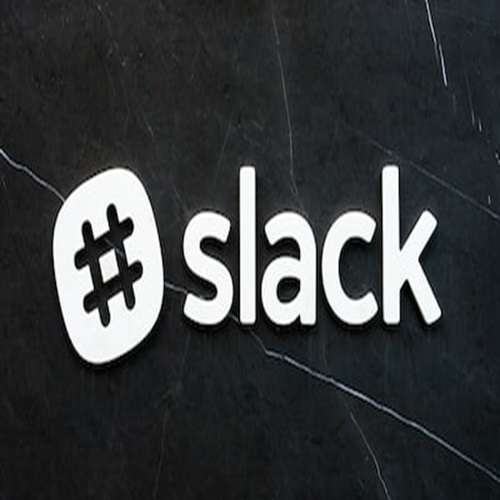
In the modern landscape of workplace communication, tools that enhance productivity and streamline workflows are of paramount importance. Among these tools, Slack stands out as a frontrunner, revolutionizing the way teams collaborate and communicate. But what if we told you that Slack can be even more powerful when combined with third-party tools? Welcome to the world of Slack integrations, where the synergy of these two entities can exponentially boost productivity and take your team’s efficiency to new heights.
In today’s fast-paced business landscape, staying productive and efficient is paramount. As remote work and distributed teams become the norm, collaboration tools have taken center stage. Among these tools, Slack has emerged as a powerhouse for workplace communication and collaboration. But did you know that Slack can do more than just facilitate chats and conversations? Enter Slack integrations – the secret sauce to boosting productivity through the seamless integration of third-party tools. In this article, we’ll dive into the world of Slack integrations, demystify their workings, and explore how they can supercharge your team’s productivity.

Understanding Slack Integrations
At its core, Slack is a platform designed to facilitate seamless communication and collaboration. However, its true potential shines when integrated with external applications. Slack integrations, simply put, allow you to connect third-party tools directly into your Slack workspace. This means that you can bring information, tasks, and updates from various tools and services right into your Slack channels, eliminating the need to switch between applications and enhancing your team’s ability to work cohesively.
Categories of Slack Integrations
The world of Slack integrations is vast and diverse, spanning various categories based on their functionalities. To make sense of the diverse landscape of Slack integrations. Here’s a breakdown of some of the most prominent categories:
- Communication and Collaboration: These integrations enhance how teams interact within Slack, making communication even more efficient. Tools like Google Workspace, Zoom, and Microsoft Teams can seamlessly integrate, allowing you to initiate video conferences, share files, and collaborate in real-time, all without leaving Slack.
- Project Management and Task Tracking: Integrating project management tools like Trello, Asana, and Jira means that you can transform Slack channels into hubs for project updates. You can create tasks, assign them to team members, and receive notifications on task progress, streamlining project management.
- File Sharing and Document Collaboration: With integrations like Google Drive, Dropbox, and Box, you can directly share and collaborate on files stored in these platforms. No more hunting for file links – everything is available within Slack, making document collaboration a breeze.
- Automation and Workflow Enhancement: Tools like Zapier, Automate.io, and Integromat enable automation by connecting different apps and triggering actions based on certain conditions. For instance, you can automatically create a new task in your project management tool whenever an important keyword is mentioned in a Slack message.
- Analytics and Reporting: Integrations such as Google Analytics, Data Studio, and ChartMogul bring data analysis right into your Slack environment. You can receive real-time reports, data updates, and even visualize analytics data, fostering data-driven decision-making.
Top Slack Integrations for Boosting Productivity
Let’s delve deeper into some exemplary integrations within each category:
- Communication and Collaboration: Imagine scheduling a Zoom meeting or sharing a Google Doc directly from your Slack channel. With these integrations, you can seamlessly bridge the gap between communication and collaboration tools, making remote work smoother than ever.
- Project Management and Task Tracking: Trello, Asana, and Jira integrations transform Slack channels into command centers for project updates. You can create tasks, assign them to team members, and receive real-time notifications on task progress, all while staying within Slack.
- File Sharing and Document Collaboration: Integrations like Google Drive and Dropbox allow you to share and collaborate on files without switching platforms. Edit documents together, leave comments, and ensure everyone is on the same page.
- Automation and Workflow Enhancement: Automation integrations like Zapier enable you to set up triggers and actions that save time and reduce manual effort. For instance, you can automatically create new tasks when specific keywords are mentioned in Slack messages, ensuring nothing falls through the cracks.
- Analytics and Reporting: By integrating analytics tools like Google Analytics, you can receive data updates and reports directly in Slack. Stay informed about website traffic, user behavior, and other crucial metrics, all without leaving your workspace.
Benefits of Using Slack Integrations
The benefits of incorporating Slack integrations into your workflow are far-reaching. The advantages of leveraging Slack integrations are far-reaching:
- Streamlined Workflows: Integrations bring various tools and tasks under one roof, reducing the need to toggle between applications. This streamlined approach accelerates workflows and minimizes context switching.
- Efficient Collaboration: With integrations, you can collaborate on files, manage projects, and hold meetings without leaving Slack. This convenience boosts team collaboration, especially in remote and distributed work environments.
- Real-time Updates: Integrations provide real-time notifications and updates within Slack, ensuring you’re always aware of changes, tasks, and important events without having to constantly check different platforms.
- Data Centralization: Data from different tools and sources can be centralized in Slack channels, allowing team members to access information quickly and facilitating informed decision-making.
How to Implement Slack Integrations
Setting up Slack integrations is a straightforward process:
- Access the Slack App Directory: Within Slack, navigate to the App Directory, where you can explore a plethora of integrations across categories.
- Browse and Select Integrations: Browse the available integrations, filter by category or functionality, and choose the ones that align with your team’s needs.
- Authenticate and Configure: Once you select an integration, follow the prompts to authenticate it with your accounts and configure settings to match your preferences.
- Testing and Troubleshooting: Test the integration by sending sample data or performing actions in the connected tool. If any issues arise, consult the integration’s documentation or support resources.
Real-world Examples of Productivity Gains
To illustrate the impact of Slack integrations, let’s explore a couple of real-world examples:
- Marketing Team Efficiency: A marketing team uses Slack as their primary communication platform. By integrating Trello, they turn a dedicated channel into a task tracking hub. New tasks are automatically added to Trello whenever they are mentioned in messages. Team members receive real-time notifications on task progress, fostering accountability and enhancing project visibility.
- Sales Insights on Demand: A sales team integrates Google Analytics into their Slack workspace. They receive daily updates on website traffic, conversion rates, and user behavior, all conveniently delivered in a designated channel. This integration empowers the sales team to make data-driven decisions and adapt their strategies in real time.
Tips for Maximizing the Value of Slack Integrations
While integrating third-party tools into Slack can be a game-changer, here are some tips to ensure you’re maximizing their value:
- Prioritize Based on Needs: Integrate tools that directly address your team’s pain points and goals. Don’t overwhelm your workspace with unnecessary integrations.
- Train Team Members: Provide training and resources to help team members effectively use integrated tools. This ensures everyone can leverage the integrations to their fullest potential.
- Regularly Review and Update: As your team’s needs evolve, revisit your integrations and adjust them accordingly. Removing outdated or unused integrations keeps your workspace clutter-free and focused.
Conclusion
Slack integrations empower teams to work smarter, not harder. By seamlessly connecting third-party tools, you can enhance communication, streamline workflows, and boost overall productivity. From project management to analytics, these integrations bring the power of multiple tools right into your Slack workspace. So, if you’re looking to take your team’s efficiency to the next level, it’s time to explore the world of Slack integrations and revolutionize the way you work. Your path to a more productive future starts with a simple integration.
Resources
- Slack App Directory: The official Slack App Directory is a great place to explore and discover a wide range of integrations for different purposes.
- Zapier Learning Center: Zapier offers comprehensive guides and tutorials on how to set up automation workflows using various integrations.
- Google Workspace and Slack Integration: Learn how to integrate Google Workspace tools like Google Drive, Google Calendar, and more with Slack.
- Trello + Slack Integration: Discover how to connect Trello boards and tasks directly to your Slack workspace for seamless project management.
- Asana Slack Integration: Explore the integration between Asana and Slack for efficient task tracking and collaboration.









